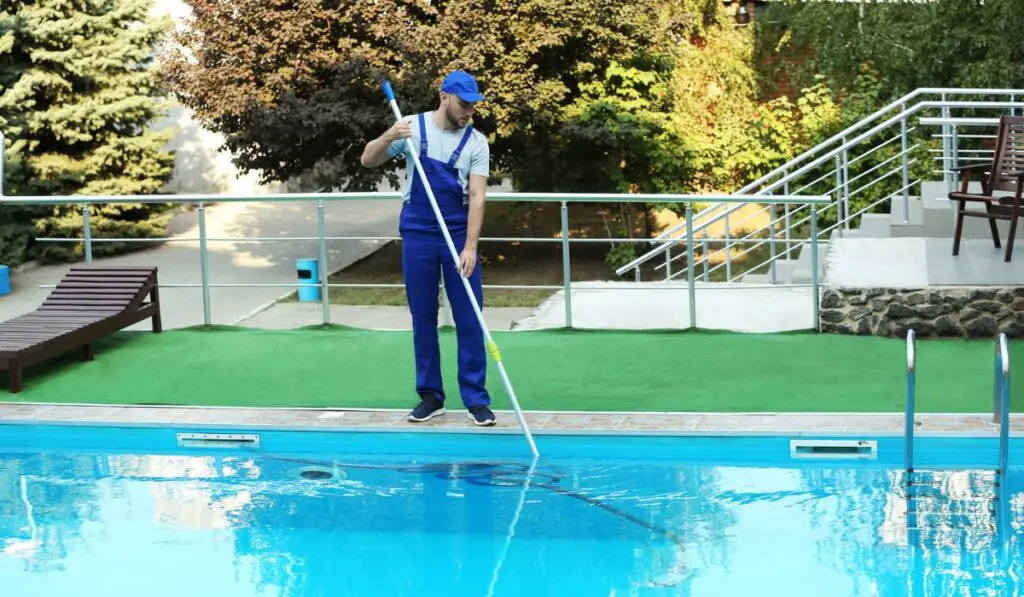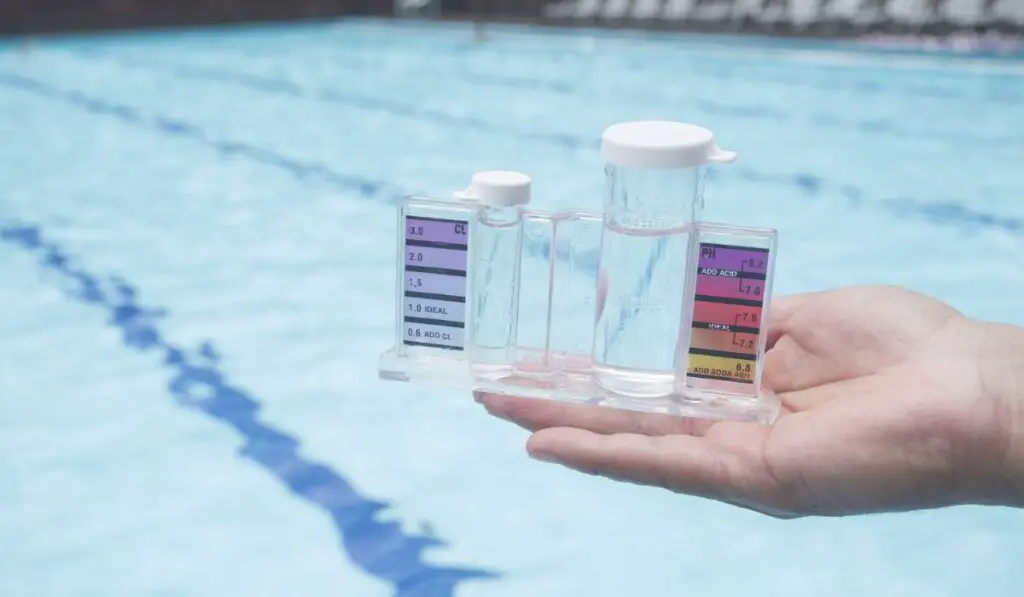Along with cleaning your pool regularly, it’s also important to shock it. It’s common knowledge that pool shock is highly effective in sanitizing pool water. But the ideal shocking frequency is hotly debated among pool owners.
You should shock your pool once every week and after it’s been heavily used. It’s also ideal to shock your pool after heavy rain and before closing and after opening your pool. Shock your pool at night and wait until the water is completely clear before jumping back in.
Keeping your pool water clean is as easy as performing regular maintenance, monitoring the water’s chemistry, and occasionally shocking it. Let’s look at what shocking a pool entails, why the process is necessary, and when you should shock your pool so you can plan your pool maintenance schedule accordingly.
What Does Shocking a Pool Mean?

Shocking a pool simply means raising the water’s free chlorine level to kill off bacteria, chloramines, algae growth, and all other contaminants in your pool. The process is straightforward, and you can do it with both non-chlorine and chlorinated pool shock.
It’s important to note that chlorinated pool shock (on Amazon) is more commonly used because it gives your pool a massive dose of chlorine (almost five times the average amount) and kills every pathogen it comes into contact with.
On the other hand, non-chlorine pool shock (on Amazon) is an oxidizer that eliminates all the organic contaminants in your pool water. This “frees up” free chlorine in your pool, making it more effective in treating and sanitizing the water.
Why is Shocking a Pool Necessary?
Unfortunately, you can’t just add water to your pool and expect it never to get dirty. Due to the weather and other outside influences, the water in your pool becomes increasingly grimy with every passing second.
For this reason, a wide range of pool chemicals are regularly added to the water. Sanitizers, like chlorine, help keep your pool water clean and completely safe for swimming.
However, even after constantly adding a sanitizing agent to the water, the chemical eventually breaks down and slowly loses its effectiveness. Once this happens, it becomes necessary to shock your pool to keep it clean.
How Often Does a Pool Need to Be Shocked?
Regularly shocking your pool will help keep the water clean and eliminate all contaminants. It’s best to shock your pool around once every week and use additional shock after a pool party or any other occasion where your pool’s been heavily used.
However, make sure you don’t overshock your pool. This will temporarily increase the water’s chlorine level, and the chemical will require a couple hours of sun exposure to burn off completely. Overshocking will also waste your money, as you’ll run out of them quicker.
Signs It’s Time to Shock Your Pool
It’s important to note that along with your regular pool maintenance schedule, there are a few “must-shock” scenarios that you should look out for. Some of the times you should shock your pool include:
When Your Pool Gives Off a Strong Chlorine Smell
You may think that if your pool strongly smells of chlorine, the water is clean and safe to use. However, this is not the case, and a strong chlorine smell is actually a sign of chloramine build-up in the pool.
These chloramines irritate the skin and are incredibly hazardous to humans, resulting in itchy skin, lung and nasal irritation, respiratory issues, and red eyes. So, if your swimming pool reeks of chlorine, it’s filthy, and you need to shock it as soon as possible!
After an Increase in Pool Use
It’s imperative to shock your pool after heavy use. This is because people bring a lot of organic contaminants into the pool, such as sweat, sunscreen, hair, and even the oils from their skin.
So, when there’s an increase in the number of people in your pool, the chlorine in the water has to work harder to eliminate all the extra pollutants, resulting in much quicker consumption and depletion of chlorine.
After Heavy Rain
A heavy rainstorm usually throws your pool’s chemical makeup entirely out of whack. As a result, it contaminates your pool with pollutants from the air, such as mold spores, insects, and wind-blown debris, and dilutes your pool’s water.
Luckily, you can easily restore depleted chlorine levels by shocking your pool. Adding pool shock after the rain will also return your pool to its chemically balanced state.
After Days of Extremely Hot Weather
Scorching weather can increase the temperature of the water in your pool, leading to an increase in bacterial growth and a decrease in the effectiveness of chlorine. For this reason, it’s important to shock your pool after extended periods of hot, sunny weather.
Before Closing or After Opening the Pool
Make sure you always shock your pool before closing or after opening it. You’ll also need to check and balance the water’s chemistry when you open your pool.
Once you achieve the proper chemical balance, you’ll have to shock the pool to oxidize and sanitize it, restoring clarity to your pool water.
You’ll also need to shock your pool one last time before closing it to keep it cleaned while it won’t be in use. Make sure you use water care chemicals, a test kit, a skimmer, and robotic pool cleaners before closing your pool for the winter.
How Do You Shock a Pool?
The answer to this question depends on the type of shock you use. There are two types of pool shock: powdered and liquid shock.
Powder Shock
If you use a powder shock, then you’ll need to add a bit more water into your water as well. For example, you’ll need to add five gallons of water for each pound of pool shock.
You’ll also need to stir the water and shock mixture properly until there aren’t any granules left. Remember that if the granules aren’t properly dissolved, they’ll sink to your pool’s bottom and damage it.
Liquid Chlorine
On the other hand, liquid chlorine is much simpler to use. You can shock your pool by just pouring it into the water. However, ensure you don’t pour it all in one spot and properly spread it around your pool.
You can also add liquid shock to your pool’s filter to ensure the chemical is properly dispersed throughout the pool.
However, ensure you never swim in your pool immediately after shocking it. It’s best to wait a few days and only enter the pool once the water is completely clear. It’s also important to read the instructions on the packaging of the pool shock and follow them to the letter.
When to Shock Your Swimming Pool

Ensure you shock your pool only after the sun has set, during the twilight hours or dusk. It’s better to avoid shocking your pool during the day as the unstabilized chlorine in the shock doesn’t have any protection against the sun’s UV rays and will lose its effectiveness under the sun.
So, make sure you only add chlorinated shock at night. This will give your pool plenty of time (around 8+ hours) to circulate the shock properly and completely clean your pool water.
However, if you’re using an oxidizer or non-chlorine shock, you can shock your pool at any time of the day. With this type of pool shock, you’ll also have to wait only 15 minutes before jumping back into the water again.
